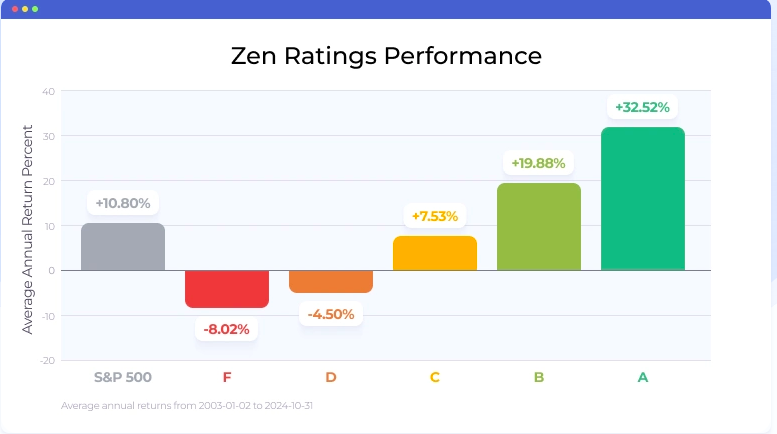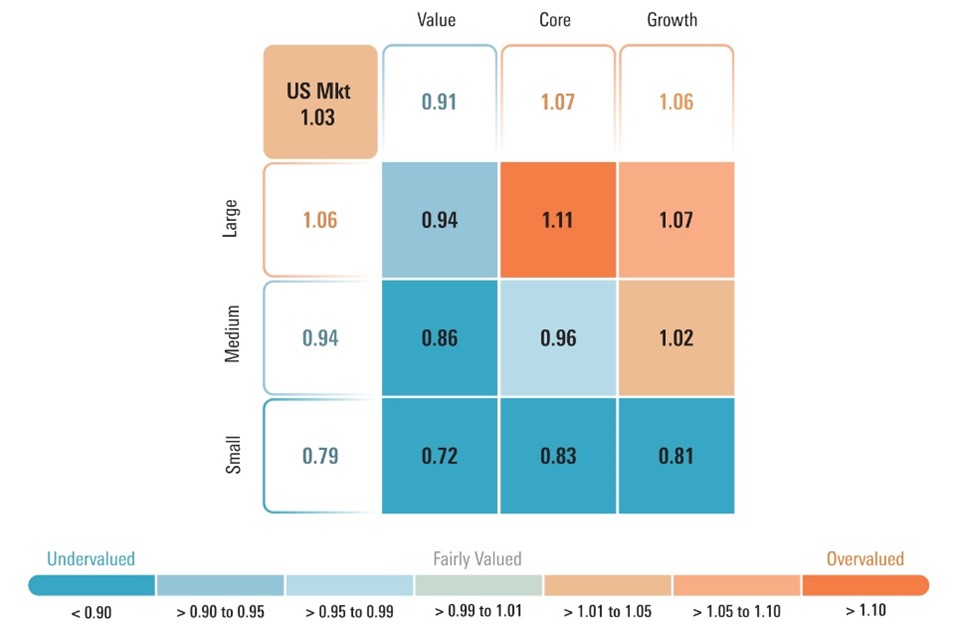The market coverage of the trading platforms that use AI stock prediction/analysis is critical, since it defines the markets and assets you can access. A platform with extensive market coverage will allow you to diversify portfolios and explore opportunities for global trading and adapt to different strategies. Here are the top 10 suggestions to evaluate the market coverage offered by these platforms:
1. Evaluate Supported Asset Classes
Stocks - Ensure that you are connected to major stock exchanges such as NYSE and NASDAQ. Additionally, make sure that your platform offers small-caps as well as mid-caps.
ETFs Check whether the platform allows you to select from a wide range of ETFs, which gives you an array of exposure.
Options and Futures: Find out if the platform supports derivatives, such as options or futures, as well as other leveraged products.
Commodities and Forex. Find out whether there are any forex pairs that are available, in addition to precious metals, commodities for energy and agricultural commodities.
Cryptocurrencies Find out if the platform is compatible with popular copyright like Bitcoin, Ethereum, and altcoins.
2. Check the Coverage Area
Global markets: Ensure the platform is able to cover major global markets, which include North America, Europe, Asia-Pacific and emerging markets.
Regional focus: Verify whether the platform is focused on certain regions or markets that align with your interests in trading.
Local exchanges: Check whether the platform is compatible with regional or local exchanges that relate to your specific location or plan.
3. Compare Real-Time vs. Delayed data
Real-time data: Ensure that the platform provides real-time data for trading and to make timely decisions.
Delayed data - Find out if delayed data is free or available at a cheaper price. This could be enough for investors looking to invest in the long-term.
Data latency: Make sure the platform is able to reduce the delay of feeds that are real-time. This is particularly important for high-frequency traders.
4. Assess Historical Data Availability
Depth of Historical Data Check that the platform has a large amount of historical data to backtest as well as analysis and testing (e.g. 10+ years).
Check for levels of granularity. Historical data could include intraday, daily and weekly level of granularity.
Corporate actions - Examine previous data to confirm that it covers stock splits, dividends as well as other corporate actions.
5. Check for Market Depth and Order Book Information
Data Level 2: Make sure that the platform provides Level 2 (order book depth) to allow for more price discovery.
Spreads of bids: Make sure that the platform shows real-time bid-ask spreads for precise price.
Volume data: Check if the platform provides detailed volume data for analyzing market activity and liquidity.
6. Examine the coverage of Indices Sectors
Major indices - Ensure your platform works with major indices such as S&P 500 and FTSE 100 to benchmark.
Sector-specific data: Find out whether the platform has information for certain sectors (e.g., technology, healthcare, energy) for analysis that is targeted.
Customized indexes. Check if your platform lets you create and monitor custom indexes based on the criteria that you define.
7. Test the integration of News and Sentiment Data
News feeds : Ensure you use a platform that incorporates live news feeds. Ideally, they should come from reputable media outlets (e.g. Bloomberg and Reuters) for the most significant market events.
Sentiment Analysis: Check whether the platform has tools for analyzing sentiment that are made from news, social media, or other sources of data.
Event-driven strategies: Determine whether the platform supports event-driven trading strategies (e.g., earnings announcements, economic reports).
8. Check for Multimarket Trading Abilities
Cross-market trading: Ensure the platform is able to trade across a variety of markets and asset classes from one interface.
Currency conversion: Check if your platform supports multi-currency trading and automatic currency conversion.
Support for time zones: Check whether the trading platform is compatible with different timezones for global markets.
9. Examine the coverage of alternative sources
Alternative data: Determine if the platform integrates different data sources (e.g. satellite imagery, internet traffic, credit card transactions) to gain unique insights.
ESG Data Find out whether there are any environmental, social, or governance (ESG data) on the platform for socially responsible investing.
Macroeconomics data: To conduct a an analysis of fundamentals, make sure the platform contains macroeconomic indicators, such as GDP (gross domestic product) inflation rates, GDP and interest rates.
Review Market Reputation and User Reviews
User reviews: Read user feedback to gauge the platform's market coverage and reliability.
Find out the reputation of the platform in relation to its coverage and awards.
Case studies: Check for cases studies, testimonials and other data that demonstrates the platform's performance on certain markets or asset categories.
Bonus Tips:
Trial period: Use the demo or trial version for free to evaluate the platform's market coverage and data quality.
API access: Verify if the platform's API permits access to market data in a programmatic manner for customised analysis.
Customer support: Check whether the platform offers support for queries related to markets or data.
Check these points to determine the market coverage provided by AI stock trading platforms. Select a platform that has access to the markets, information, and tools you require for successful trading. You can diversify your portfolio and make the most of new opportunities using a broad market coverage. Have a look at the top rated moved here for ai for stock trading for website tips including ai stock trading app, trading with ai, ai investing, options ai, options ai, market ai, ai trading, market ai, ai for investment, chatgpt copyright and more.

Top 10 Ways To Evaluate The Speed And Latency Ai Stock Predicting/Analyzing Trading Platform
Speed and latency is crucial when it comes to considering AI analysis of trading platforms and stock prediction. This is especially true for high-frequency traders, algorithmic traders, and active traders. Even milliseconds delay can affect trading execution. These are the top 10 suggestions for evaluating the speed and latency of these platforms:
1. Real-Time data feeds can be used to determine the quality of your real-time data
Data delivery: Make sure that the platform is able to transmit data in real-time, with a minimum delay (e.g. less than milliseconds).
Closeness of data source: Determine whether servers are near major exchanges.
Data compression: Check if the platform uses effective data compression techniques to speed up data delivery.
2. Test Trade Speed of Execution
Processing time for orders: This is the time it takes for the platform to process and execute trades once you have submitted an order.
Direct market access (DMA). Check to see if the platform you are using has DMA. DMA allows orders sent directly to an exchange to be processed with no intermediaries.
Check for detailed execution reporting that includes timestamps as well as confirmations of the order.
3. Examine the response of the platform
User interface (UI) speed: See the speed at which the UI of your platform responds to your inputs (e.g. click buttons or loading charts).
Chart updates - Make sure that the charts are updated in real-time and without delay.
Mobile apps' performance: When using a mobile app, make sure it is at the same speed as a desktop version.
4. Find out if the network infrastructure is low-latency.
Server Locations: Make sure that the platform has servers with low latency located near major hubs for financial exchanges or financial hubs.
Co-location services: Check whether the platform provides co-location services, allowing you to host your trading algorithm on servers near to the exchange.
High-speed networks: Check that the platform utilizes fiber-optic networks that are high-speed or low-latency technologies.
5. Backtesting the simulation speed and test backtesting
Find out how quickly the platform analyzes and processes the historical data.
The latency on platforms must be minimal enough to allow for real-time simulations of trades.
Parallel processing (or distributed computing): Find out if a platform uses parallel or distributed processing to speed up complicated calculations.
6. Assessment of API Latency
API response time: Measuring how quickly the platform’s API responds (e.g. fetching market data, or placing orders).
Rate limits: Make sure you know whether API has reasonable rate limits to prevent delays in high-frequency transactions.
WebSocket support Make sure your device is running WebSocket protocol for low-latency, real-time streaming of data.
7. Test stability of the platform while under load
The scenarios of trading with high volumes Test the stability and ability to respond by simulated trading scenarios.
Market volatility: Make sure your platform is able to handle price fluctuations during times of high volatility.
Stress testing: Check if the platform offers the tools to stress test your strategies under extreme circumstances.
8. Evaluate network and connectivity
Internet speed demands. Make sure that your internet connection has the recommended speeds for the platform to ensure optimal performance.
Make sure there aren't any redundant connections.
VPN latency. If using a VPN look to see whether it creates an excessive amount of latency.
9. Check for Speed Optimization Features
Pre-trade analytics: Make sure that the platform offers pre-trade analytics to optimize order routing and execution speed.
Smart order routing (SOR): Verify if the platform uses SOR to find the fastest and most cost-effective execution locations.
Monitoring latency: Check whether your platform comes with tools that allow you to analyse and monitor latency in real time.
Examine the feedback of users and benchmarks
User reviews: Examine the feedback of users to evaluate the platform's speed and latency performance.
Benchmarks from third-party sources: Search for independent benchmarks and reviews which compare the performance of the platform to its competitors.
Case studies: Find out whether the platform has case studies, or testimonials, that highlight its abilities to provide low-latency.
Bonus Tips
Trial period: Try an unpaid trial or demo to evaluate the platform's performance and latency in actual scenarios.
Customer support: Ensure the platform has support for latency-related issues or optimization.
Hardware requirements: Find out if you need specific hardware for optimal performance (e.g. high-performance computers).
By using these tips using these tips, you will be able to be able to accurately evaluate the speed, latency, and the accuracy of AI stock prediction/analyzing trading systems. This will enable you to choose a platform that meets your needs for trading and minimize any delay. Platforms that are low-latency are crucial for traders who use high-frequency algorithms. Small delays can negatively impact their profits. Follow the recommended linked here for more tips including best stock prediction website, ai software stocks, ai stock analysis, ai options trading, best ai stocks to buy now, how to use ai for stock trading, investing with ai, best ai penny stocks, invest ai, best ai stocks to buy now and more.
